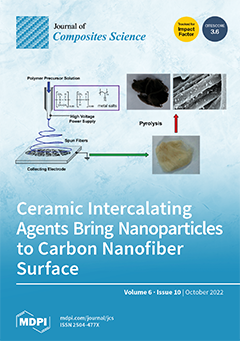Open AccessArticle
New Structural Nanocomposite Based on PLGA and Al2O3 NPs as a Balance between Antibacterial Activity and Biocompatibility with Eukaryotic Cells
by
Alexander V. Simakin, Ruslan M. Sarimov, Veronika V. Smirnova, Maxim E. Astashev, Dmitriy A. Serov, Denis V. Yanykin, Denis N. Chausov, Alexey V. Shkirin, Oleg V. Uvarov, Evgeny Rotanov, Andrey Shakhovskoy, Vadim I. Bruskov, Vladimir E. Ivanov, Alexey S. Dorokhov and Andrey Y. Izmailov
Cited by 5 | Viewed by 1677
Abstract
Development of eco-friendly and biodegradable package materials is an important goal of modern science and international industry. Poly(lactic)-co-glycolic acid (PLGA) is suitable for this purpose. However, biocompatible materials may be contaminated with bacteria. This problem may be solved by the addition of metal
[...] Read more.
Development of eco-friendly and biodegradable package materials is an important goal of modern science and international industry. Poly(lactic)-co-glycolic acid (PLGA) is suitable for this purpose. However, biocompatible materials may be contaminated with bacteria. This problem may be solved by the addition of metal oxides nanoparticles (NPs) with antibacterial properties. Although metal oxides NPs often show cytotoxicity against plant and mammalian cells, a new nanocomposite based on PLGA and aluminum oxide (Al
2O
3) NPs has been developed. The PLGA/Al
2O
3 NP composite has pronounced antibacterial properties. The addition of Al
2O
3 NPs 0.01% inhibited growth of
E. coli for >50%. The antimicrobial effect of Al
2O
3 NPs is implemented through the generation of reactive oxygen species and damage of bacterial proteins and DNA. The biocompatibility of the nanocomposite with plant and mammalian cells was studied. The PLGA/Al
2O
3 NP composite did not influence the growth and development of tomatoes and cucumbers. PLGA and its composite with Al
2O
3 NPs 0.001–0.1% did not influence viability and proliferation of mammalian cells, on their density or substrate colonization rate. The developed nanocomposite has controlled mechanical properties, high antibacterial activity and high biocompatibility, which makes it an attractive candidate for building and food package material manufacture and agriculture.
Full article
►▼
Show Figures





